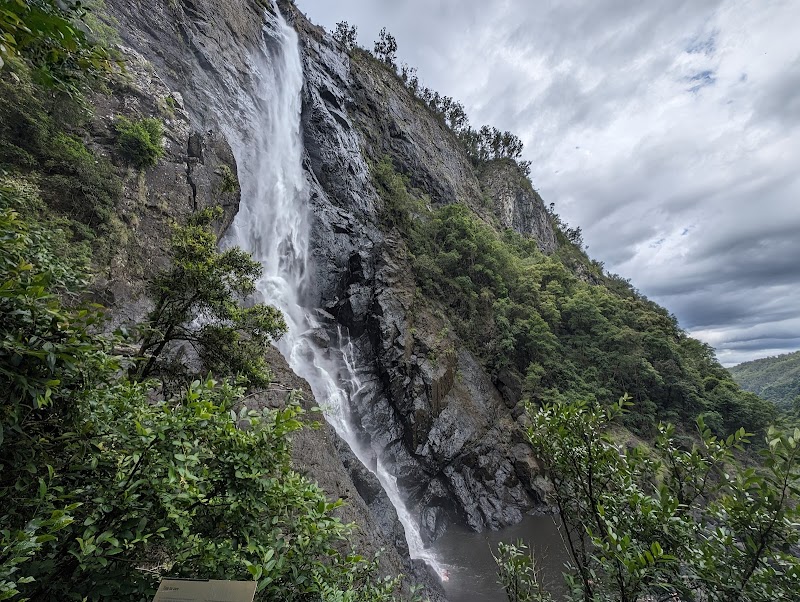
Exploring Capertee Valley Birdwatching Days: A Practical Guide to Kew’s Avian Adventure
Capertee Valley Birdwatching Days in Kew, NSW offers an immersive experience in one of Australia's most dramatic bird habitats. Discover rare species amid rugged terrain while enjoying practical advice for navigating this demanding yet rewarding adventure.
Start Early to Catch the Best Bird Activity
Birds are most active at dawn and early morning, so plan your hike to begin early for optimal sightings and cooler temperatures.
Wear Sturdy Footwear with Good Grip
Trails combine loose gravel and rocky sections; hiking boots ensure stability and reduce risk of slips or discomfort.
Carry Adequate Water
The exposed sections of the trail get hot quickly; bring at least 2 liters of water per person to stay hydrated throughout your trek.
Bring Binoculars and a Field Guide
Binoculars increase your chances of spotting elusive bird species, while a field guide helps with identification during the walk.
Exploring Capertee Valley Birdwatching Days: A Practical Guide to Kew’s Avian Adventure
Set against the rugged backdrop of New South Wales, Capertee Valley Birdwatching Days invites nature lovers to engage directly with a landscape shaped by wind, rock, and feathered life. This event in Kew offers more than casual strolls; it demands attention, respect, and readiness for shifting terrain and the unexpected calls of birdlife.
The valley itself is a giant amphitheater of sandstone walls rising sharply over 1,000 meters, carving a protected haven for rare birds like the Regent Honeyeater and the Gang-gang Cockatoo. During birdwatching days, guided walks range from 5 to 12 kilometers, covering undulating terrain with elevation gains up to 300 meters. Paths vary from forested tracks shaded by Eucalyptus canopies to rugged stretches where sandstone cliffs dare you to keep moving.
Start early to catch the valley’s awakening chorus—the birds are loudest at dawn. Carry a reliable pair of binoculars and wear sturdy hiking boots with solid grip; the trail alternates between loose gravel and packed dirt that can shift underfoot. Hydration is critical: the day’s heat can rise sharply once the morning sun clears the escarpment, and the valley’s exposed sections offer little relief.
Besides bird spotting, the walk rewards hikers with expansive views across the valley floor. Winds swirl through the valley in spontaneous bursts, carrying scents of dry bush and the sharp hint of distant eucalyptus. Silence falls when birds pause, compelling you to listen to the subtle rustle of wings and distant calls. It’s not an easy walk, but it is unquestionably worthwhile—offering the chance to engage with a fiercely independent ecosystem.
Plan your visit around spring and early autumn for optimal bird activity and comfortable temperatures. Avoid the peak summer heat, when midday sun can sap your energy and wildlife retreats. The event organizers provide expert-led sessions explaining identification techniques, local ecology, and conservation efforts, enriching the experience.
Whether you're a casual birdwatcher or a dedicated adventurer familiar with the terrain, Kew’s Capertee Valley Birdwatching Days offers a challenge that is as invigorating as it is educational. Prepare for a day where nature is in charge, and every step is an opportunity to witness resilience and survival in one of Australia’s grandest valleys.
Nearby Trips
All Adventures
Boat Charters
Water Activities
Adventures near Kew, New South Wales
Discover the unique and memorable adventures that make Kew, New South Wales special.
Frequently Asked Questions
What bird species are most commonly seen during Capertee Valley Birdwatching Days?
The event highlights rare and endemic species like the Regent Honeyeater, Gang-gang Cockatoo, and Rockwarbler. Regular sightings include Pink Robin and White-winged Triller.
Are the trails suitable for families or beginners?
Some trails are accessible for casual walkers but still require moderate fitness due to uneven surfaces and elevation changes. Guided tours can help beginners navigate safely.
Is there any wildlife other than birds to look out for during the event?
Yes, the valley is home to echidnas, eastern grey kangaroos, and various reptiles. Early morning is the best time to encounter more elusive animals.
Can I participate without prior birdwatching experience?
Absolutely. The event includes expert-led sessions tailored to all experience levels, offering tips on species identification and using binoculars effectively.
Are there any special environmental guidelines visitors should follow?
Visitors must stick to established trails to protect fragile habitats and avoid disturbing nesting sites. Waste should be packed out to minimize human impact.
What is the difficulty level of the hikes during the event?
Hikes range from moderate to challenging due to uneven terrain, rocky sections, and elevation gain, but pacing is flexible depending on the chosen route.
Recommended Gear
Hiking boots
Protects your feet and provides traction on uneven, slippery trails.
Binoculars
Enhances bird spotting, essential for observing species high in cliffs or dense foliage.
Water bottle (2L+)
Prevents dehydration on exposed, hot trail sections.
Layered clothing
Allows adjustment for temperature swings from cool mornings to warmer afternoons.
Local Insights
Hidden Gems
- "The vantage point at Pantoneys Crown offers panoramic views less frequented by visitors."
- "A quiet, shady stretch near the Capertee Creek is known for rare frog calls during spring."
Wildlife
- "Keep an eye out for the brush-tailed rock-wallaby, usually spotted at dawn or dusk."
- "Seasonal migrations bring flocks of honeyeaters that briefly transform the valley's soundscape."
History
"The valley holds cultural significance for the Wiradjuri people, with rock art sites and traditional hunting grounds preserved within the landscape."
